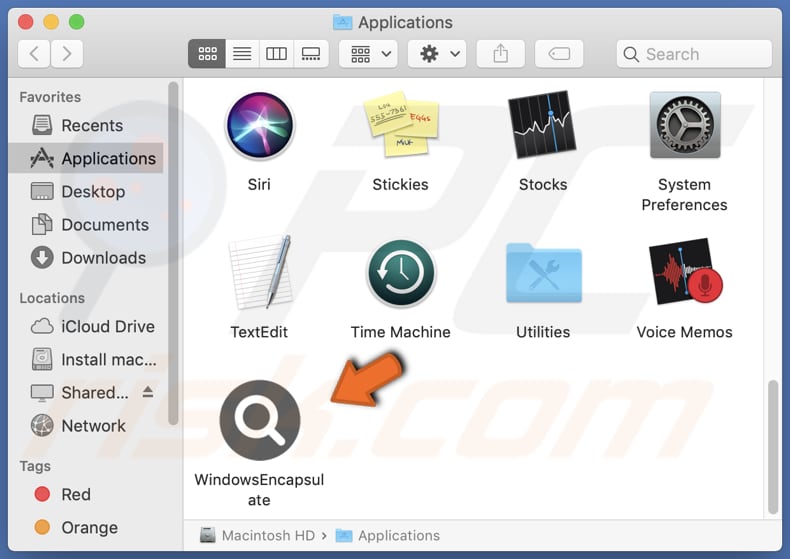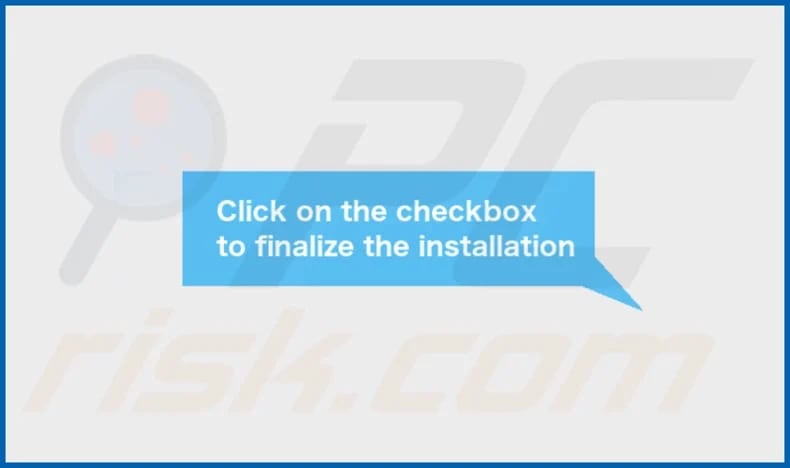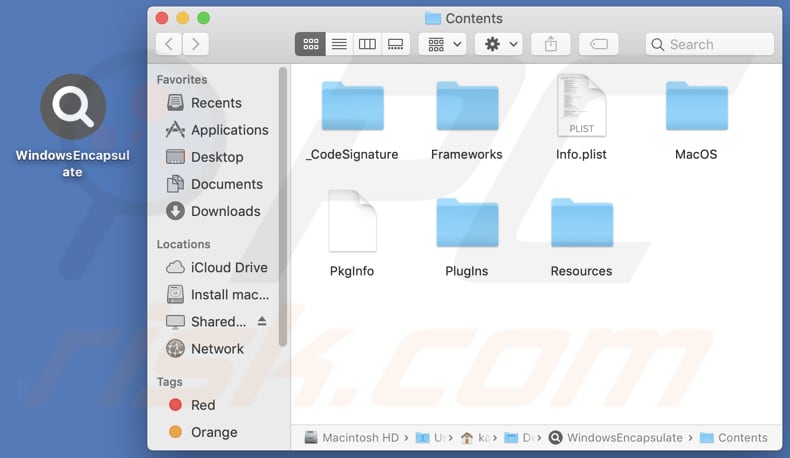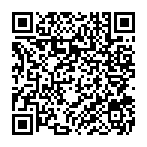How to remove WindowsEncapsulate from computers
![]() Written by Tomas Meskauskas on (updated)
Written by Tomas Meskauskas on (updated)
What kind of application is WindowsEncapsulate?
Upon testing the WindowsEncapsulate application, it has come to our attention that it exhibits intrusive advertisements. Consequently, we categorize WindowsEncapsulate as adware. It is typical for users to download and install apps like WindowsEncapsulate without a complete understanding of their functionalities.

WindowsEncapsulate adware in detail
WindowsEncapsulate manifests as an unwanted application that primarily functions to display bothersome advertisements on the user's system. Users may encounter an influx of intrusive ads in the form of pop-ups, banners, or other promotional content while browsing the internet or using various applications.
The advertisements presented by WindowsEncapsulate can significantly disrupt the user experience, causing annoyance and potential interference with regular computing tasks. Furthermore, the presence of adware raises concerns about privacy, as it may track user behavior and gather data, potentially compromising the confidentiality of sensitive information.
Ads generated by WindowsEncapsulate may lead users to open various shady websites that could potentially pose security risks. These websites might include online platforms promoting questionable products, fake services, or potentially unwanted applications.
Websites promoted via ads displayed by WindowsEncapsulate could also involve scams (e.g., technical support scams), phishing attempts, or other malicious activities designed to exploit unsuspecting users. These pages may employ social engineering techniques to deceive users into taking actions that compromise their security.
| Name | Ads by WindowsEncapsulate |
| Threat Type | Adware, Mac malware, Mac virus |
| Detection Names | Avast (MacOS:Adload-AG [Adw]), Combo Cleaner (Gen:Variant.Adware.MAC.Adload.31), ESET-NOD32 (A Variant Of OSX/Adware.Synataeb.H), Kaspersky (Not-a-virus:HEUR:AdWare.OSX.Adload.j), Full List (VirusTotal) |
| Additional Information | This application belongs to Adload malware family. |
| Symptoms | Your Mac becomes slower than normal, you see unwanted pop-up ads, you are redirected to dubious websites. |
| Distribution methods | Deceptive pop-up ads, free software installers (bundling), torrent file downloads. |
| Damage | Internet browser tracking (potential privacy issues), display of unwanted ads, redirects to dubious websites, loss of private information. |
| Malware Removal (Mac) | To eliminate possible malware infections, scan your Mac with legitimate antivirus software. Our security researchers recommend using Combo Cleaner. |
Conclusion
In conclusion, WindowsEncapsulate emerges as adware, displaying intrusive advertisements that can disrupt the user experience and potentially compromise privacy. It is important to mention that in addition to showing ads, apps like WindowsEncapsulate can gather various data (including sensitive information) and hijack browsers.
Users are advised to exercise caution when downloading applications and to use reliable antivirus or anti-malware tools to safeguard their systems against adware and associated security risks.
Examples of apps similar to WindowsEncapsulate are UltimateUser, AssistiveConnection, and ZipDomainNameRate.
How did WindowsEncapsulate install on my computer?
Adware like WindowsEncapsulate is frequently bundled with free software or applications that users intentionally download. During the installation process, users may overlook additional bundled software, leading to unintentional installation.
Also, users may encounter misleading advertisements that prompt them to download and install applications like WindowsEncapsulate. These ads often employ enticing offers or fake system alerts to trick users into thinking the software is necessary or beneficial.
Visiting dubious websites or clicking on links from unreliable sources can also expose users to deceptive download prompts for adware. In other cases, adware is distributed via P2P networks, third-party downloaders or app stores, and similar channels.
How to avoid installation of unwanted applications?
In order to prevent the inadvertent download and installation of apps like WindowsEncapsulate, users should exercise caution when downloading software, only use reputable sources, carefully review installation prompts (check the settings of installers), and employ reliable antivirus or anti-malware tools to detect and remove potentially unwanted applications.
Avoiding interacting with ads and pop-ups can also help to prevent unwanted applications. If your computer is already infected with WindowsEncapsulate, we recommend running a scan with Combo Cleaner Antivirus for macOS to automatically eliminate this adware.
A pop-up that appears after the installation of WindowsEncapsulate:

WindowsEncapsulate's installation folder

Instant automatic Mac malware removal:
Manual threat removal might be a lengthy and complicated process that requires advanced IT skills. Combo Cleaner is a professional automatic malware removal tool that is recommended to get rid of Mac malware. Download it by clicking the button below:
▼ DOWNLOAD Combo Cleaner for Mac
By downloading any software listed on this website you agree to our Privacy Policy and Terms of Use. To use full-featured product, you have to purchase a license for Combo Cleaner. Limited seven days free trial available. Combo Cleaner is owned and operated by Rcs Lt, the parent company of PCRisk.com read more.
Quick menu:
- What is WindowsEncapsulate?
- STEP 1. Remove WindowsEncapsulate related files and folders from OSX.
- STEP 2. Remove WindowsEncapsulate ads from Safari.
- STEP 3. Remove WindowsEncapsulate adware from Google Chrome.
- STEP 4. Remove WindowsEncapsulate ads from Mozilla Firefox.
Video showing how to remove WindowsEncapsulate adware using Combo Cleaner:
WindowsEncapsulate adware removal:
Remove WindowsEncapsulate-related potentially unwanted applications from your "Applications" folder:

Click the Finder icon. In the Finder window, select "Applications". In the applications folder, look for "MPlayerX", "NicePlayer", or other suspicious applications and drag them to the Trash. After removing the potentially unwanted application(s) that cause online ads, scan your Mac for any remaining unwanted components.
Remove adware-related files and folders

Click the Finder icon, from the menu bar. Choose Go, and click Go to Folder...
 Check for adware generated files in the /Library/LaunchAgents/ folder:
Check for adware generated files in the /Library/LaunchAgents/ folder:

In the Go to Folder... bar, type: /Library/LaunchAgents/

In the "LaunchAgents" folder, look for any recently-added suspicious files and move them to the Trash. Examples of files generated by adware - "installmac.AppRemoval.plist", "myppes.download.plist", "mykotlerino.ltvbit.plist", "kuklorest.update.plist", etc. Adware commonly installs several files with the exact same string.
 Check for adware generated files in the ~/Library/Application Support/ folder:
Check for adware generated files in the ~/Library/Application Support/ folder:

In the Go to Folder... bar, type: ~/Library/Application Support/

In the "Application Support" folder, look for any recently-added suspicious folders. For example, "MplayerX" or "NicePlayer", and move these folders to the Trash.
 Check for adware generated files in the ~/Library/LaunchAgents/ folder:
Check for adware generated files in the ~/Library/LaunchAgents/ folder:

In the Go to Folder... bar, type: ~/Library/LaunchAgents/

In the "LaunchAgents" folder, look for any recently-added suspicious files and move them to the Trash. Examples of files generated by adware - "installmac.AppRemoval.plist", "myppes.download.plist", "mykotlerino.ltvbit.plist", "kuklorest.update.plist", etc. Adware commonly installs several files with the exact same string.
 Check for adware generated files in the /Library/LaunchDaemons/ folder:
Check for adware generated files in the /Library/LaunchDaemons/ folder:

In the "Go to Folder..." bar, type: /Library/LaunchDaemons/

In the "LaunchDaemons" folder, look for recently-added suspicious files. For example "com.aoudad.net-preferences.plist", "com.myppes.net-preferences.plist", "com.kuklorest.net-preferences.plist", "com.avickUpd.plist", etc., and move them to the Trash.
 Scan your Mac with Combo Cleaner:
Scan your Mac with Combo Cleaner:
If you have followed all the steps correctly, your Mac should be clean of infections. To ensure your system is not infected, run a scan with Combo Cleaner Antivirus. Download it HERE. After downloading the file, double click combocleaner.dmg installer. In the opened window, drag and drop the Combo Cleaner icon on top of the Applications icon. Now open your launchpad and click on the Combo Cleaner icon. Wait until Combo Cleaner updates its virus definition database and click the "Start Combo Scan" button.

Combo Cleaner will scan your Mac for malware infections. If the antivirus scan displays "no threats found" - this means that you can continue with the removal guide; otherwise, it's recommended to remove any found infections before continuing.

After removing files and folders generated by the adware, continue to remove rogue extensions from your Internet browsers.
Remove malicious extensions from Internet browsers
 Remove malicious Safari extensions:
Remove malicious Safari extensions:

Open the Safari browser, from the menu bar, select "Safari" and click "Preferences...".

In the preferences window, select "Extensions" and look for any recently-installed suspicious extensions. When located, click the "Uninstall" button next to it/them. Note that you can safely uninstall all extensions from your Safari browser - none are crucial for regular browser operation.
- If you continue to have problems with browser redirects and unwanted advertisements - Reset Safari.
 Remove malicious extensions from Google Chrome:
Remove malicious extensions from Google Chrome:

Click the Chrome menu icon ![]() (at the top right corner of Google Chrome), select "More Tools" and click "Extensions". Locate all recently-installed suspicious extensions, select these entries and click "Remove".
(at the top right corner of Google Chrome), select "More Tools" and click "Extensions". Locate all recently-installed suspicious extensions, select these entries and click "Remove".

- If you continue to have problems with browser redirects and unwanted advertisements - Reset Google Chrome.
 Remove malicious extensions from Mozilla Firefox:
Remove malicious extensions from Mozilla Firefox:

Click the Firefox menu ![]() (at the top right corner of the main window) and select "Add-ons and themes". Click "Extensions", in the opened window locate all recently-installed suspicious extensions, click on the three dots and then click "Remove".
(at the top right corner of the main window) and select "Add-ons and themes". Click "Extensions", in the opened window locate all recently-installed suspicious extensions, click on the three dots and then click "Remove".

- If you continue to have problems with browser redirects and unwanted advertisements - Reset Mozilla Firefox.
Frequently Asked Questions (FAQ)
What harm can adware cause?
Adware can harm users by disrupting the computing experience with intrusive ads, compromising privacy through data tracking, and redirecting to potentially malicious websites. It poses risks of annoyance, privacy invasion, and exposure to scams or malware.
What does adware do?
Once installed, adware inundates users with pop-up ads, banners, or other promotional content, disrupting the user experience. In addition to causing annoyance, adware often collects user data and can be designed to hijack browsers.
How do adware developers generate revenue?
Adware developers generate revenue through various mechanisms. Pretty often, they participate in affiliate marketing programs, earning commissions for driving users to make purchases or download specific products. Also, they capitalize on pay-per-click (PPC) or pay-per-view (PPV) models.
Will Combo Cleaner remove WindowsEncapsulate adware?
Combo Cleaner will thoroughly scan your computer, removing all installed adware-type applications. Relying on manual removal may not be foolproof, as remnants of files can persist within the system. Certain components might linger and remain active, necessitating a tool like Combo Cleaner to ensure thorough removal.


▼ Show Discussion